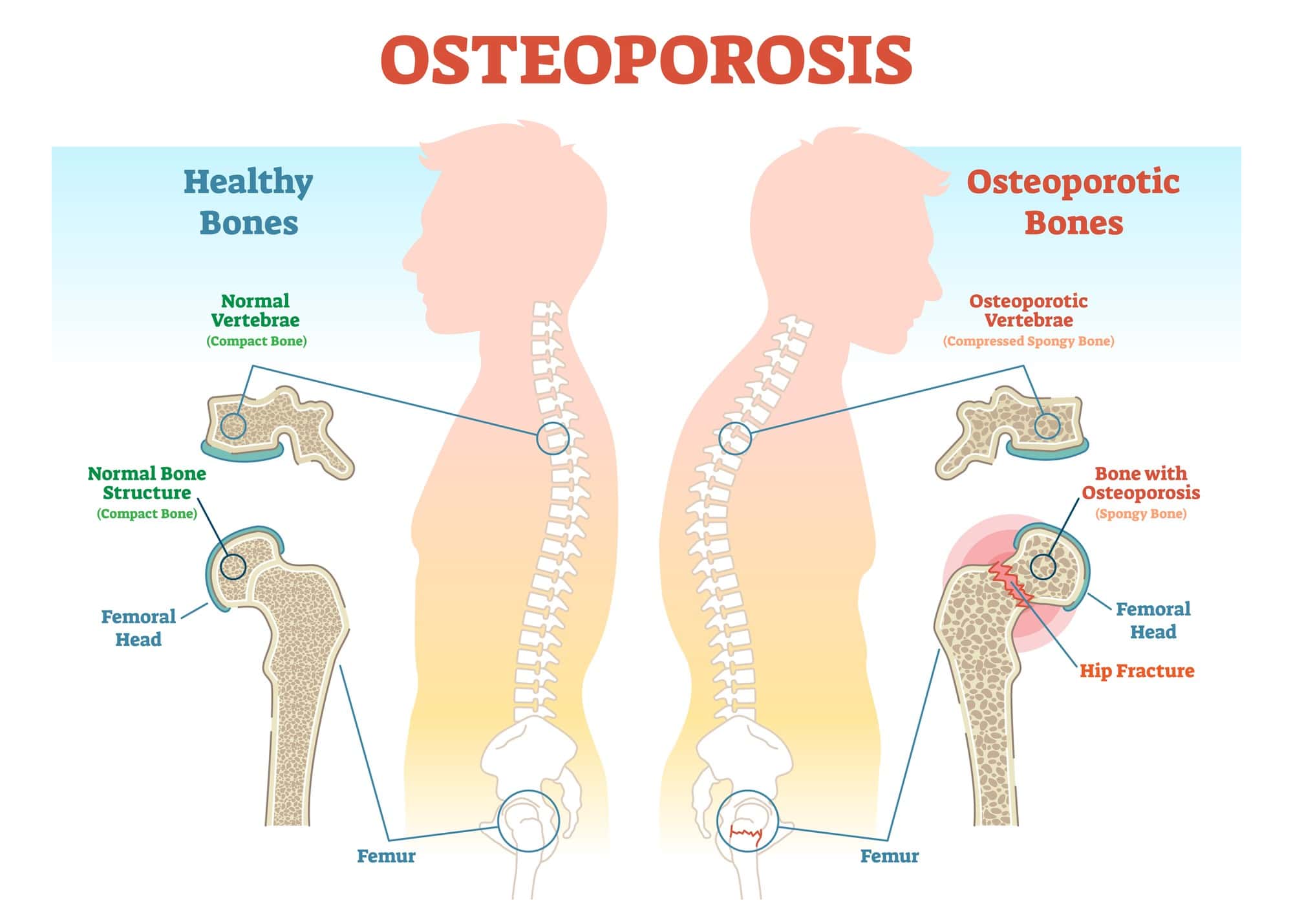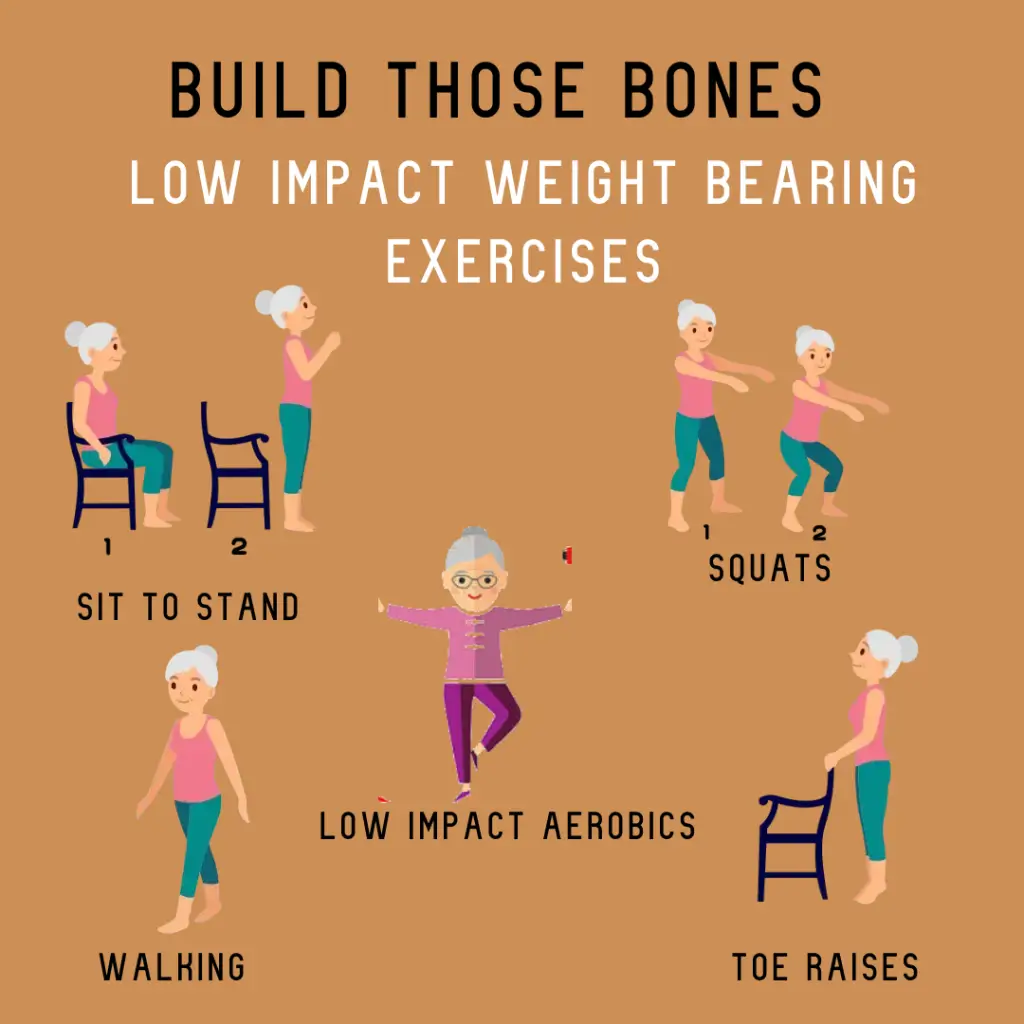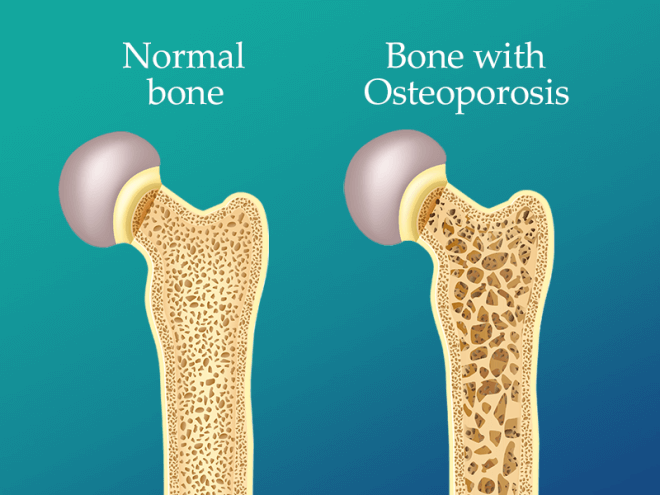
Osteoporosis is a condition that causes bones to become weak and brittle, making them susceptible to fractures even from minor falls or stresses. Often called a "silent disease" because it progresses without symptoms until a fracture occurs, osteoporosis can significantly impact quality of life. While medication is part of the treatment, physiotherapy plays a vital, non-pharmacological role in managing osteoporosis by improving bone density, strength, balance, and posture, thereby reducing fracture risk.
Understanding Osteoporosis
Our bones are constantly remodeling, with old bone tissue being removed and new bone tissue being formed. In osteoporosis, bone creation doesn't keep up with old bone removal, leading to bones becoming porous and weaker. Common risk factors include:
- Age (especially post-menopausal women)
- Family history
- Low body weight
- Certain medications (e.g., long-term corticosteroid use)
- Lack of calcium and Vitamin D
- Sedentary lifestyle

The Benefits of Physiotherapy for Osteoporosis
Physiotherapy provides a safe and effective way to address multiple aspects of osteoporosis management:
- Bone Density Improvement: Weight-bearing and resistance exercises stimulate bone formation, helping to maintain or even improve bone density.
- Muscle Strengthening: Stronger muscles provide better support for bones and joints, reducing stress and improving overall body mechanics.
- Balance and Coordination Training: Crucial for preventing falls, which are the primary cause of fractures in people with osteoporosis.
- Posture Correction: Addressing kyphosis (rounding of the upper back) to improve spinal alignment and reduce spinal compression fractures.
- Pain Management: Alleviating pain associated with muscle weakness or postural changes.
- Education and Safe Movement: Teaching proper body mechanics for daily activities to minimize fracture risk.

Recommended Exercises for Osteoporosis
A physiotherapy program for osteoporosis will be tailored to your individual bone density, fitness level, and overall health. It typically includes:
- Weight-Bearing Exercises: Activities where you bear your own weight against gravity. Examples include walking, jogging (if appropriate), dancing, stair climbing, and gentle hiking.
- Strength Training Exercises: Using resistance bands, light weights, or bodyweight to strengthen major muscle groups.
- Balance Exercises: Activities like standing on one leg, heel-to-toe walking, or tai chi to improve stability and reduce fall risk.
- Posture Exercises: To strengthen back extensors and core muscles, promoting an upright posture.
- Flexibility Exercises: Gentle stretches to maintain joint mobility.
Important: High-impact activities, twisting motions, and exercises that involve excessive forward bending of the spine should generally be avoided to prevent compression fractures.
Living with osteoporosis doesn't mean living in fear of fractures. By proactively managing your condition with a physiotherapist, you can build stronger bones, improve your balance, and maintain an active, independent lifestyle. Contact Arogya Physiotherapy today to learn how we can help you strengthen your bones and live confidently.